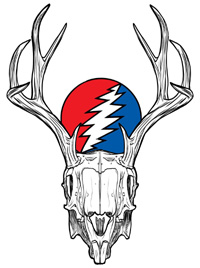As I read the fiction of Robert E. Howard, I have attempted to determine his unnoted influences. Things he went looking for, like Bullfinch’s Mythology and Frazer’s Golden Bough, and things he was drawn to, like Poe, are not the concern with this line if inquiry. Rather, I wonder what he read in the high school library, what book was handed down by a general reader in the family. Although I must ultimately fail to pin down specific volumes, I could do no worse than looking into popular adventure fiction touching on American frontier history published the decade before his birth.
In postmodern America, libraries stock a physical selection based on tiny relative space available, and in line with the popular line of inquiry among readers—essentially what is popular on commercial stands, meaning fiction predominates and nonfiction books get booted off the shelf in a few years. However, in my childhood, I read books—mostly history books as the selection as then vast, and historical novels-that had been on the shelves 30 years earlier.
When Howard was a boy 100 years ago it falls to reason that books printed in the 1890s would still be well-represented in the popular literature. The Columbia Historical Novel series took the reader from Columbus to the present day by “telling a pleasing story” with historical facts as then known to be true and in favor with the cause of continuing to weld America together as a whole after the civil war and in the face of explosive immigration. Imagine a series of well-written and informative novels arranged chronologically and overseen by a Patrick Buchanan like figure. At this time the Founding fathers myth was being promulgated, elevating war criminals and conniving politicians of a century earlier to deity-like status, in a very Roman tae on establishing an ancestral republic that could stand the test of time.
John R. Musick’s entry A Century Too Soon, discusses the white slave rebellion in the English Colony of Virginia in a whitewashed but not wholly falsified manner. Since the poor whites of the colony had rallied around Cromwell’s Puritan cause, against the royalist sympathies of their owners, they were eventually established as Roundhead” supporters, not to be confused with the Puritan Roundheads of the north, which is exactly what Musick does, representing them as Puritans. This is Musick’s only falsification. The story of the northern colonies, including Dutch versus Swedish warfare, Indian massacres by the Dutch, and the mini-war for Kent Island in Maryland, are very truthfully presented.
The story of the rebellion by the working class against the upper class in Virginia exactly 100 years before the American Revolution will be the subject of the second part of this review.
The facts of life in Virginia are told with minimal distortion, representing the Indians as they were, the blacks in a bestial light, and the cavalier class as they were. The only distortion being the author’s claims that the white slaves and indentured servants were Puritans. Indeed, these may not have been the author’s work, for his narrative concerning the unchartered lands to the south and the actual fighting do not support them. He may have been edited by the series editor.
As Musick sets the stage for the coming confrontation between aristocratic cavaliers and working class roundheads in Virginia, he offers some fascinating insights, that do not entirely gloss over the fact that Virginia was white slave plantation in the 1600s, with fewer blacks by far at the time of the rebellion, then whites in bondage. It was during America’s post-reconstruction reeducation that the term slave was removed from white slave and indentured servant applied, and that the common term for black slaves “servant’ was removed from the public record and replaced with slave. The fact was, until 1835, slave and servant were terms used interchangeably to described human chattel of African, European and mixed stock.
The impression one gets from A Century Too Soon was that the upper class cavaliers of 1600s Virginia were admirable jaunty fellows who just needed a few civil wars to grow up, that the lower class Roundheads [white salves] of Virginia just needed a century of coexisting with the cavaliers to smooth down their rough edges, and that the black slaves of the 1600s were hopelessly inhuman animals that needed a couple hundred years of bondage to make them fit for freedom with the implication, that by 1892 every segment of America except for the immigrants flooding in from Europe and China, were fully assimilated and homogenized Americans conceived by the pen of Thomas Jefferson and delivered Caesarian-like by the sword of George Washington into the raw material for greatness.
Below are some curious facts offered by Musick:
That in 1634 the Virginia-based adventurer Claybourne lost three men to musket fire in the Battle for Kent Island against other white men in the Chesapeake Bay, and that Claybourne avenged this defeat in 1654 by killing some 20 “puritans” allied with Catholics in a battalion-sized battle?
That the seeds for representative democracy were planted in 1641New York by the Dutch as the town merchants tried best to decide how to deal with the Governor in the face of the Raritan Indian uprising.
In the cold and dark of late February, 1643, along the lower Hudson, bands of Indians fleeing from the savage Mohawks who were reputed to be cannibals and who allied with the whites often against other Indians, were camping on the river bank, hoping for protection from the Dutch. The Dutch governor of Manhattan, De Vries, sent out men to slaughter the Indians in their sleep and burn the women and children and elders in their huts!
In 1655 as one-legged Dutch strongman Stuyvesant returned from gaining the surrender of the tiny Swedish garrison on the Delaware River, a peach farmer named Van Dyck was gunning down an Indian woman for taking some of his peaches from the orchard—the concept of which was difficult for Indians to understand, causing another Dutch and Indian war...
Upon the fall of King Charles to the Roundheads in England, his son was offered sanctuary in Virginia, where they hoped to keep the prince in exile.
More to the point of Howard’s obsession with white slavery, while the author and or editors of this book that would have stocked the libraries of his childhood, held that most whites were justly treated “servants” of the yet-to-escape-adolescence aristocracy, and that there had been no white slaves, and that the Roanoke colony mysteriously evaporated under Indian attack as opposed to the deserting indentured servants’ and white slaves’ own claim, in the form of the carving, to have willingly moved in with neighboring Indians, we are treated with the following passages concerning the possible settlement of the Carolinas by Englishmen from the Virginia Colony in the Carolina vicinity of Cape Hatteras and Cape Fear.
“The [nearby] country of Nanesemond [Virginia] had long abounded in non-conformists, and the settlements on Albemarle Sound were the result of spontaneous [unsanctioned]overflowing from Virginia. A few vagrant [escaped] families were planted within the limits of Carolina; but it is quite certain that no colony existed until after the restoration.”
When, in 1639, the Virginia Colony offered a grant of land for each member of a proposed expedition of 100 “freemen being single and disengaged of debts,” not enough men who could qualify were found to mount the expedition. Freeman was a term later applied to blacks who had won their freedom from slavery. Men who had completed their term of indenture [enslavement, usually not voluntary] would have begun such a term as a boy, and would have been held from 3 to 30 years, most likely 7-15 years, before having worked off “their debt.”
Despite his mission of offering a homogenous early America, the author cannot help but point out how recklessly poor colonists headed for the deadly frontier at the first opportunity, putting the lie to the rest. In the Puritan north, whites hid behind fortress walls from the Indians. In the cavalier south, where tobacco and land clearance slavery ruled, the poor whites could not wait to go fight Indians over the right to build a cabin in the woods.
And that was the beginning of the American Frontier.











